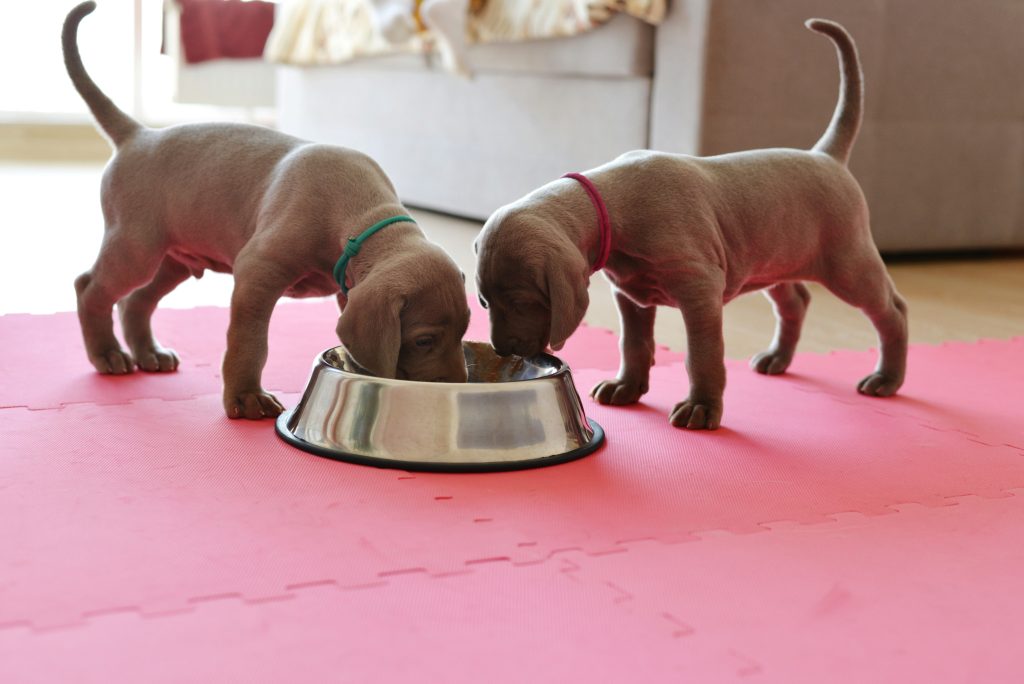For dog owners, especially those who are new to raising a pup, this is a common worry: how much should I feed my dog in one meal? Feed too little, and you worry it might be hungry; feed too much, and you worry it might overeat, affecting its health. Watching your dog finish its food and still lick the bowl, or sometimes leaving food uneaten, can leave you feeling uncertain. Don’t worry—dogs may not speak, but their bodies give clear signals when they’re full. By paying attention to a few key signs, you can get a good idea, making mealtime much less stressful.
-
Check how much food is left in the bowl
If your dog takes a few bites and then walks away, leaving a good amount of food in the bowl without even sniffing it, it’s most likely full. On the other hand, if it cleans the bowl completely, even licking it shiny, but doesn’t leave afterward, wandering around the empty bowl and looking at you expectantly, sometimes whining, it usually means it’s still hungry and could use a bit more food! Note: Some dogs have a “food-saving” habit and like to leave some for later. If your dog leaves food but shows normal behavior—like a well-rounded belly and good energy—it may not be hunger, just a personal habit.
-
Gently feel its belly
About 10–20 minutes after a meal, gently feel your dog’s belly—from behind the ribs to just before the hind legs. If the belly feels slightly rounded and firm but not overly bloated or tense, it indicates your dog is full. If the belly still feels sunken and you can easily feel the ribs, it probably hasn’t eaten enough. Conversely, if the belly feels hard and inflated like a balloon, and your dog seems uncomfortable, reluctant to move, or even whines, that’s a clear sign it’s been overfed.
-
Pay attention to its eating speed
Dogs usually start eating quickly, devouring their food—this is normal. The key is to watch for changes during the meal. If your dog slows down, chews more carefully, or picks up a kibble, chews a bit, then drops it, or wanders around the bowl looking a bit distracted, it’s likely full. If it eats quickly from start to finish, immediately licks the bowl or the floor, or looks at you expectantly and nudges you, it probably hasn’t had enough.

-
Observe its behavior after eating
Your dog’s post-meal behavior can also give you clues. If it looks alert and energetic, plays or rests comfortably, maybe casually grooms itself, or lies down in a cozy spot without any issues, it’s full. But if it seems lethargic, lying down without energy, or appears slightly uncomfortable, it’s likely overfed. If it continues licking its mouth, swallowing repeatedly, or lingering near the food bowl, it clearly hasn’t had enough and is still seeking food.
-
Watch its stool
Your dog’s stool is an important health indicator and can indirectly reflect whether it’s eaten enough. Formed, sausage-shaped stools that are dark brown (depending on the kibble), moderately firm, and easy to pick up—produced 1–2 times a day—usually indicate a well-fed dog. If the stool is very soft, loose, or watery, or if your dog is defecating more frequently, it might be overfed or experiencing digestive issues. Hard, dry, pellet-like stools, or infrequent bowel movements, could indicate underfeeding or insufficient water intake.
See, figuring out whether your dog is full doesn’t require guessing or complicated calculations. The key is to pay attention to a few things after mealtime: how much food is left in the bowl, whether the belly feels rounded, whether its eating pace slows down, how it behaves after eating, and whether its stool is normal. By observing these signs over a few meals, you’ll gradually get a clear sense of your dog’s appetite and habits, making feeding time much easier and more confident. Ensuring your dog eats healthily and comfortably is one of the greatest joys of being a pet owner. Next time you serve a meal, try paying attention to these details—you might be surprised at what you learn!





